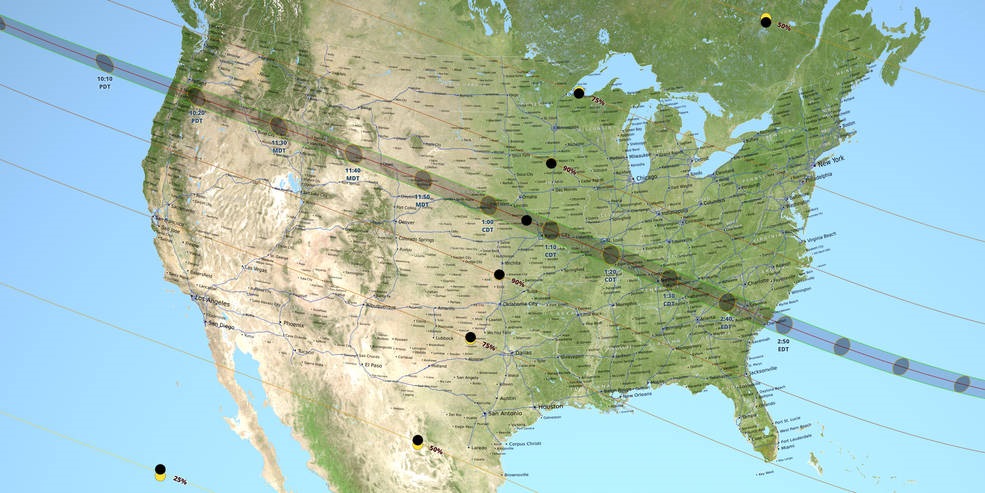Published: August 16, 2017
On Monday, August 21, 2017, anyone in North America within the path of totality will be able to witness a total solar eclipse.  The corona, the path where the moon will completely cover the sun and the sun’s atmosphere, will stretch from Salem, Oregon to Charleston, South Carolina. Others outside of this path will see a partial solar eclipse.
The corona, the path where the moon will completely cover the sun and the sun’s atmosphere, will stretch from Salem, Oregon to Charleston, South Carolina. Others outside of this path will see a partial solar eclipse.
NASA created a Solar Eclipse website as a guide to this amazing event. Explore this site for activities, broadcasts, and resources from NASA and their partners across the nation. NASA will also have live streaming from locations across the country for those not in the direct path of the eclipse.
Congressional Remarks
163 Cong. Rec. H6311 - AUGUST 21 TOTAL SOLAR ECLIPSE
PDF
Details
163 Cong. Rec. H5926 - SOLAR ECLIPSE IN HOPKINSVILLE, KENTUCKY
PDF
Details
163 Cong. Rec. S4757 - THE GREAT AMERICAN ECLIPSE
PDF
Details
Eclipse Viewing Safety
The only safe way to look directly at the uneclipsed or partially eclipsed sun is through special-purpose solar filters, such as “eclipse glasses” or hand-held solar viewers. Homemade filters or ordinary sunglasses, even very dark ones, are not safe for looking at the sun; they transmit thousands of times too much sunlight. Manufacturers and authorized dealers of eclipse glasses and hand-held viewers must be compliant with the ISO 12312-12 international safety standard for such products.
Read more about " How to Tell If Your Eclipse Glasses or Handheld Solar Viewers Are Safe" on the American Astronomical Society's webpage.
NASA Develops a Solar Eclipse Braille Book
NASA has created a tactile guide, "Getting a Feel for Eclipses," to allow everyone, including those unable to visibly experience the eclipse to experience it. This book is designed to depict basic concepts about interaction and alignment of the sun with the moon and Earth during a solar eclipse, and will help sighted as well as visually impaired people better understand the science of eclipses by adding the sense of touch to their learning process. "NASA is privileged to help bring this historic eclipse to a segment of our population who have previously not had an opportunity to enjoy these celestial phenomena," said Greg Schmidt, deputy director of NASA's Solar System Exploration Research Virtual Institute. "We feel strongly that everyone should have a part to play in exploring our universe."
When is the Next Total Eclipse Over North America?
 After August 21, 2017, the next total solar eclipse over North America visits Mexico, the United States, and Canada on April 8, 2024.This will be the Great North American Eclipse.
After August 21, 2017, the next total solar eclipse over North America visits Mexico, the United States, and Canada on April 8, 2024.This will be the Great North American Eclipse.
Additional Resources
- For more information about how NASA will be viewing the eclipse and studying the sun and Earth, visit their webpage "Eclipse 2017: NASA Supports a Unique Opportunity for Science in the Shadow."
- View the National Science Foundation and American Astronomical Society’s website "Solar Eclipse Across America" for an in-depth resource guide to this event including related events and activities.
- Listen to the webinar sponsored by the Federal Depository Library, as Linda Zellmer, Government Information & Data Services Librarian, Western Illinois University speaks on “Government Information on The Great American Eclipse.” This webinar surveys the Government information available about the eclipse, including websites, maps, graphic materials, and publications.
- Visit the GPO Online Bookstore to find other NASA publications as well as other publications in the Astronomy and Space Exploration collection.